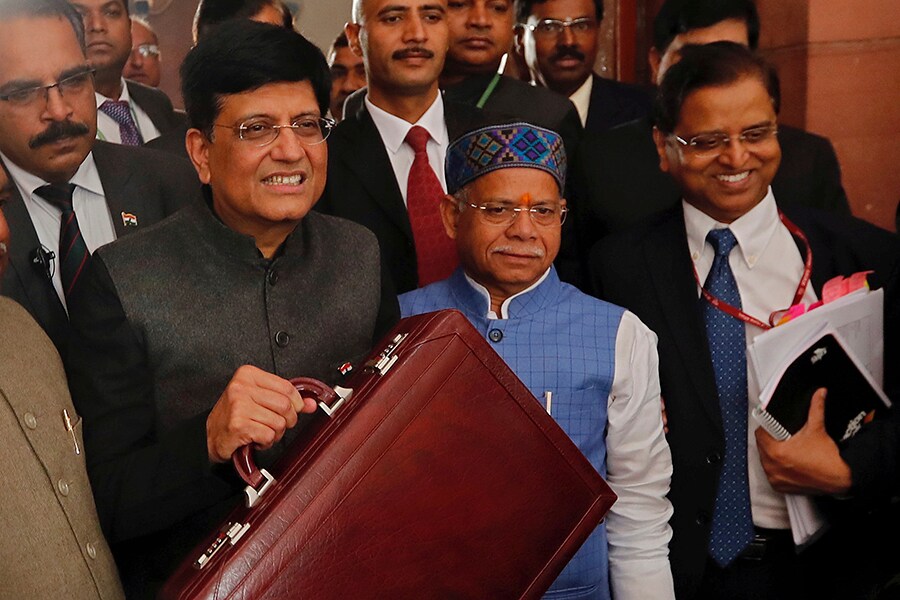Budget 2019: Govt puts money in vote bank
Modi government's last budget showers two-thirds of the electorate—from farmers to the middle class—with pre-poll sops


 Image: Adnan Abidi/ Reuters Election year budgets are usually interwoven with promises of what the voter will get if the incumbent returns. The Modi government’s last budget lived up to that expectation. It ended up putting cash in the pockets of at least two-thirds of the electorate—with a section of the middle class getting twice as much as small landowning farmers.
Image: Adnan Abidi/ Reuters Election year budgets are usually interwoven with promises of what the voter will get if the incumbent returns. The Modi government’s last budget lived up to that expectation. It ended up putting cash in the pockets of at least two-thirds of the electorate—with a section of the middle class getting twice as much as small landowning farmers.
If the government is to be believed, these pre-poll sops to voters can be done without it breaking its balance sheet. The fiscal deficit for both the present year and next year (FY2019-20) will stand at 3.4 percent after squeezing out some capital expenditure. Election-year budget maths is often revised so, take these numbers with a pinch of salt. For now, those fearing the worst in the form of unmitigated spending can heave a sigh of relief. Rs 326,965 crore is the extra amount of budgeted spending for next year.
Also take with a (much bigger) pinch of salt the government’s claim that India will be a $5 trillion economy five years from now and $10 trillion eight years thereafter. To get there would require growth rates of 11.4 percent and 9 percent respectively.
What’s important is the optics of the announcements. Finance Minister Piyush Goel started by addressing farmers. Agrarian distress due to overproduction and low food price inflation has pushed this constituency into growing indebtedness. The farm loan waiver announced in the 2009 interim budget worked beautifully for UPA-1. Goel went a step further and promised income support of Rs 6,000 a year payable in three equal installments to landed farmers owning 2 hectares of less. (For landless labourers, the government argues that MNREGA does the job of income support.)
The promise has been backdated to December 1 2018 most likely to ensure that the cash credits to bank accounts before the election. Total cost for this year: Rs 20,000 crore. For next year: Rs 75,000 crore. About 72 percent of landowners fall in this category, according to Ajay Kakra, leader food and agriculture, PWC India.
With rural voters taken care of, Goel spent much of his speech laying out the government’s achievements. GST has been implemented and is on its way to being stabilised. 2018-19 collections stood at Rs 97,000 crore a month. The Insolvency and Bankruptcy Code has resulted in a recovery of Rs 300,000 crore. India has also become the fastest builder of highways in the world with 27 km being built every day. Social security was one key plank of this government. Last year, the rollout of Ayushmann Bharat took health care to the masses. This year, there was an expansion of pension schemes to include workers in the unorganised sector.
While the jury may be out on whether demonetisation was a success, Goel rightly claimed it had increased the tax base with 10.6 million people filing tax returns for the first time in 2017-18. While direct tax collections have moved up slowly, the government has decided to give taxpayers with an income of up to Rs 5 lakh a full tax rebate. A little under half of the 68 million taxpayers are expected to benefit leaving the government poorer by Rs 18,500 crore.
Despite his recent election losses, Modi still enters election season as the odds on favourite. His government’s last budget shows he’s ready to put up a fight.
First Published: Feb 01, 2019, 18:11
Subscribe Now